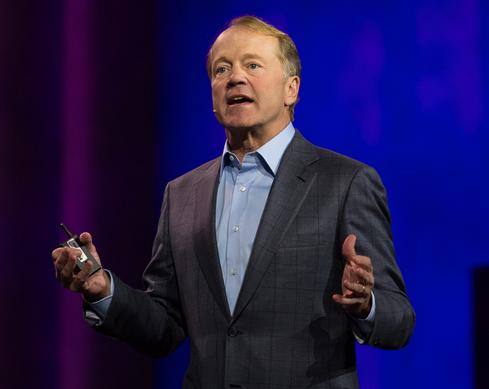Cisco IoT Leader Resigns: What's Next?Cisco IoT Leader Resigns: What's Next?
Internet of Things general manager Guido Jouret resigned this week. Where does that leave Cisco's Internet of Everything strategy?


CES 2014: Cisco's Internet of Everything Vision
CES 2014: Cisco's Internet of Everything Vision (Click image for larger view and slideshow.)
Cisco confirmed this week that Guido Jouret, GM of Cisco's Internet of Things (IoT) group, has resigned. IoT constitutes the core of Cisco's Internet of Everything (IoE) strategy, which CEO John Chambers frequently claims will generate as much as $19 trillion in new revenue by 2020 for Cisco and its customers. Cisco senior VP and enterprise networking GM Rob Soderbery will replace Jouret as IoT group lead.
Cisco defines IoE as the linkages that bring IoT to life. In other words, iPhones, connected homes, smart parking meters, and other objects embedded with sensors and radios aren't useful without an infrastructure to connect them. Cisco naturally envisions its technology as the glue that unites a coming world of connected devices.
[Is IoT really ready for primetime? Read Internet of Things: What's Holding Us Back.]
Jouret's departure was first reported by blogger Brad Reese. Cisco confirmed in an email to information that Soderbery now leads the IoT group, and that Jouret left to "pursue a new opportunity." A company spokesman declined to elaborate.
In an interview with information last October, Jouret said the IoT group's goal is to "help connect the unconnected," noting that only 1% of devices were then linked up. Connecting the rest requires specific considerations, such as ruggedized equipment for field use and edge-level intelligence (or "fog computing," as Cisco calls it) so companies don't go bankrupt sending all the data they collect back to their cloud datacenters.
In Cisco's ideal world, sensor-embedded shoes will collect data that lets manufacturers see how well their designs work in the real world, and bike helmets will communicate health records to ambulances in the event of a cycling accident. But before that world fully materializes, Cisco and other IoT players face a number of hurdles.
Connecting billions of devices means convincing millions of companies in closed, proprietary verticals to adopt at least some open standards. Otherwise, we won't have an "Internet of Everything," so much as many disconnected "Internets of Some Things." Moreover, security concerns are already pervasive enough on the conventional Internet. One can imagine the implications, if everything from baby clothes, to cars, to city street lamps becomes an opportunity for hackers.
{image 1}
Despite these challenges, few major tech players deny IoT's potential. Microsoft and Intel are among those who've showily declared large-scale IoT ambitions over the last few months. Don't look at Jouret's departure as evidence that Cisco is retreating from its IoE commitment. More likely, it's due to Jouret's finding a better job in a hot tech sector, or Cisco wanting a new executive to drive this vital area.
In an interview with information last month, Jouret showed little indication that he intended to leave. Rather, he spoke enthusiastically about his team's recruitment and retention efforts, which he described as indicative of IoT's exciting potential.
While IoT applications, such as the connected home, are in the early, experimental stage of adoption, businesses are charging ahead. By using sensors on machines such as a power plant turbines and connecting those sensors to a network, a company can collect data and monitor performance and maintenance in order to prevent a breakdown and its resulting production disruption.
Cisco is one of five founding members of a group formed last month called the Industrial Internet Consortium, which is trying to drive standards for things such as information security and data sharing that are needed for business uses of IoT. Other founding members include AT&T, GE, IBM, and Intel.
What do Uber, Bank of America, and Walgreens have to do with your mobile app strategy? Find out in the new Maximizing Mobility issue of information Tech Digest.
About the Author
You May Also Like






